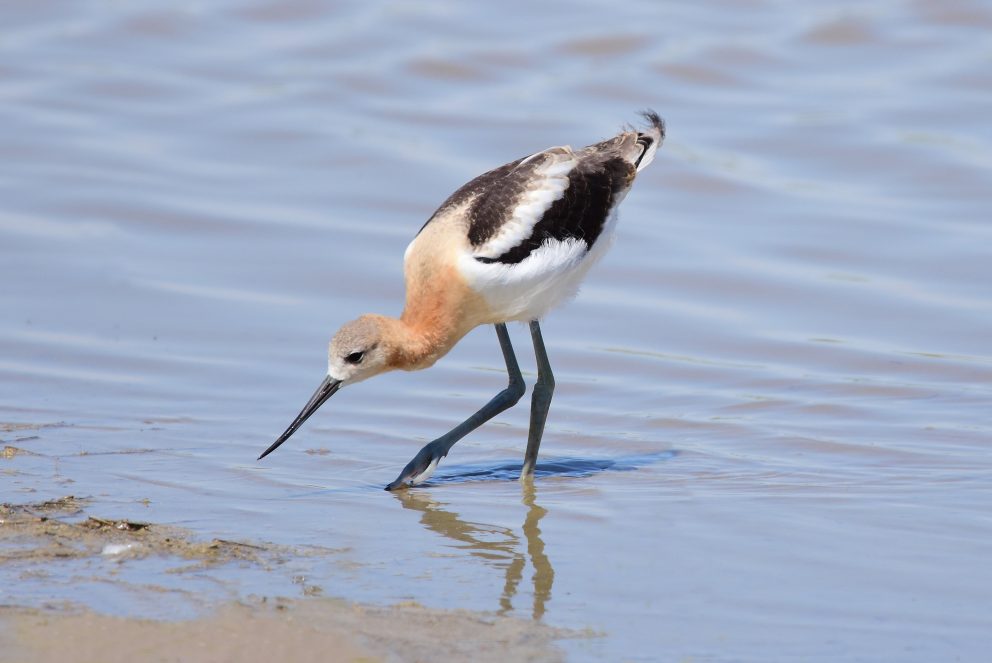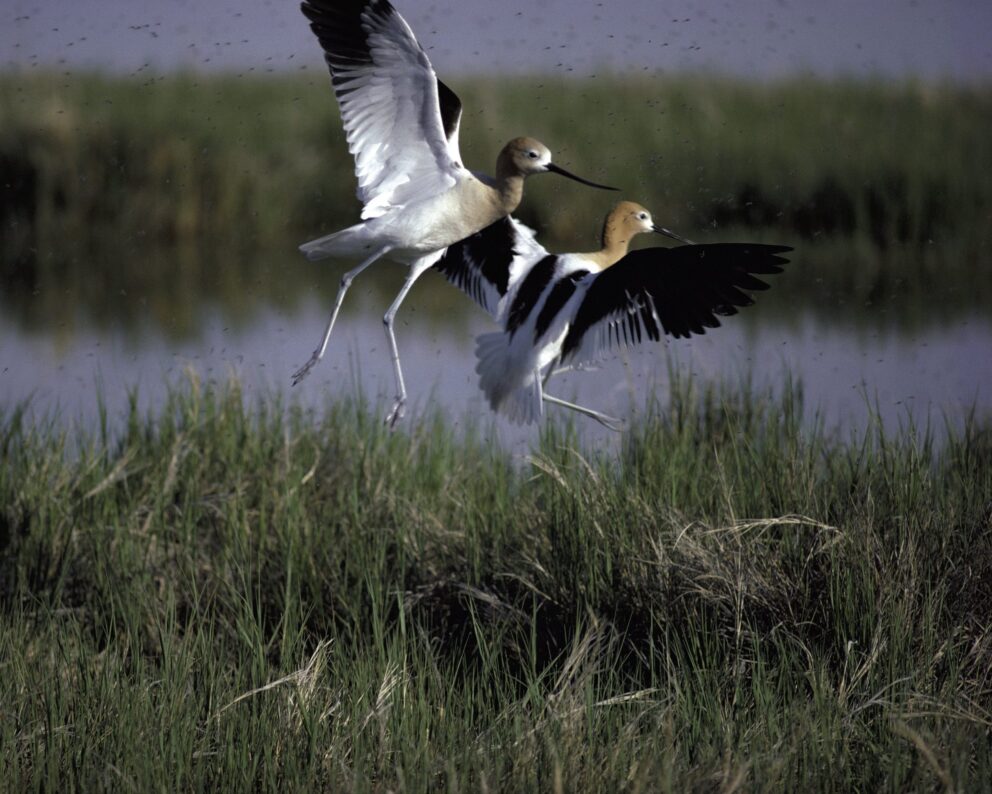- SCIENTIFIC NAME
- Recurvirostra americana
- CLASSIFICATION
- Bird
- LIFE SPAN
- 5-10 Years
- SIZE
- 16-19” | 0.5-0.75lbs
- STATE CONSERVATION STATUS
-
- Priority Species
- FEDERAL CONSERVATION STATUS
- Least Concern
- GAME STATUS
- Non-Game
- GAME TYPE
- None
- Washoe
- Humboldt
- Pershing
- Churchill
- Mineral
- Lyon
- Douglas
- Carson City
- Storey
- Elko
- Lander
- Eureka
- White Pine
- Esmeralda
- Nye
- Lincoln
- Clark
Habitat & Range
American Avocets prefer shallow waters where they can wade and forage for aquatic insects and plants. They nest in areas that do not have a lot of vegetation but are near water. In Nevada, Avocets are found throughout the state either during migration or during breeding season. Avocets breed in the northwestern part of the state and some parts of the northeast.
- Desert Playas
- Lakes and reservoirs
- Marsh
Threats
- Habitat Degradation
- Habitat Loss
Natural History
American Avocets wade through shallow water to catch aquatic insects. They also consume aquatic vegetation and seeds. They will consume beetles, shrimp, small fish, and many other kinds of aquatic invertebrates. Their unique upturned bill helps them catch their prey by moving their bill side to side as they wade through the water.
American Avocets usually nest on open flats or areas with scattered tufts of grass on islands or along lakes, including alkaline, and marshes. Readily nests on artificial islands in impoundments. Males and females both aid in choosing a nest site and constructing the simple ground nest by scraping the ground. The female lays 3-4 eggs and a couple hours after hatching the long-legged chicks are able to scamper around.
Fun Facts














